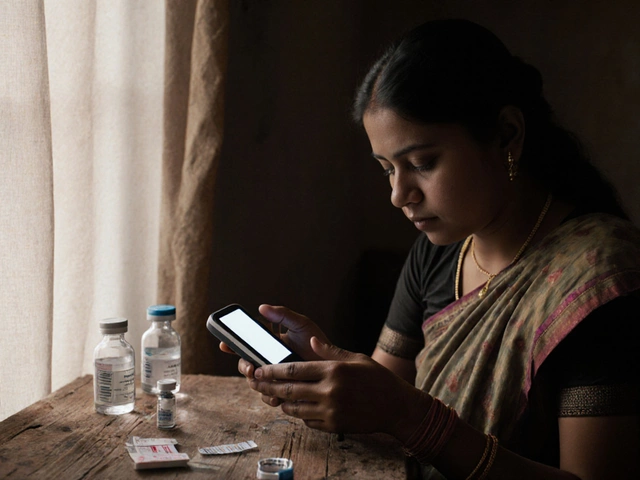Imagine getting a knee replacement or dental implant while sipping coconut water on a beach—sounds bizarre, right? But millions of people are actually doing something like this each year, just to save money, dodge long waiting lists, or get treatments not available back home. That’s medical tourism in action.
If the idea sounds wild, just look at the numbers: more than 10 million people travel for medical care every year, according to the Medical Tourism Association. And it’s not just folks from the US or Europe. People worldwide are hunting for top doctors, affordable prices, and a faster fix—often in places like Thailand, Mexico, India, and Turkey.
But why would someone leave their home country for something as serious as surgery? The reasons are usually pretty simple—cost, speed, or better access to a certain treatment. Sometimes it’s all three. That, plus a chance to turn recovery into a mini-vacation, is a tempting deal for lots of people.
- Medical Tourism Explained
- Why People Choose Healthcare Abroad
- Popular Destinations and Treatments
- Tips and Precautions for Travelers
Medical Tourism Explained
So, what exactly is medical tourism? In a nutshell, it means traveling to another country for healthcare—anything from dental work to heart surgery. Instead of using local hospitals and clinics, people pack their bags and fly to countries where the exact same treatment costs less, happens faster, or offers better results.
This isn’t some trend just starting out. The medical tourism industry is worth over $100 billion worldwide. Places like Thailand, India, Turkey, and Mexico have become global hubs because they offer modern healthcare, trained professionals, and good prices. Some countries even set up special hospitals just for international patients, with staff who speak English and service packages that include airport pickups.
Here’s a quick look at how medical tourism works for most people:
- Find a clinic or hospital abroad through online research, recommendations, or a medical travel agency.
- Check that the doctors are certified and the facilities look legit—usually by reading reviews, joining patient forums, or checking international accreditation.
- Book a consultation, travel for the treatment, and recover at a local hotel or recovery center before heading home.
The most popular reasons for medical tourism? Procedures like cosmetic surgery, dental care, orthopedic surgeries, fertility treatments, and sometimes even life-saving operations. It’s not all about saving money—sometimes people want treatments that aren’t approved or available back home.
If you want to see how the costs really stack up, below is a simple comparison of common procedures done in the U.S. versus popular medical tourism hotspots. The price difference is wild:
| Procedure | USA ($) | Mexico ($) | India ($) |
|---|---|---|---|
| Heart Bypass | 123,000 | 27,000 | 7,900 |
| Dental Implant | 3,500 | 900 | 1,000 |
| Knee Replacement | 35,000 | 12,000 | 8,500 |
With numbers like these, it’s obvious why medical tourism keeps growing. But don’t forget, even though there are savings and perks, you still need to check the details and make sure you’re in safe hands.
Why People Choose Healthcare Abroad
When it comes to medical tourism, it usually boils down to money, access, and speed. Most people are just looking for ways to fix their health without going broke or waiting months on a list. Let’s get real—healthcare costs can be outrageous in places like the US. For example, a heart bypass in America can set you back over $120,000. In India, the same surgery is closer to $10,000 including hospital stay. That’s not just a price difference, that’s your entire retirement fund on the line.
Besides cost, wait times are a killer. In places with public health systems, like the UK or Canada, you might wait months, sometimes over a year, for non-urgent surgeries. So, people fly out to get things sorted faster. No one wants to live with bad hips or painful teeth if they don't have to.
Sometimes people look abroad for treatments that just aren’t available at home. Maybe the medicine isn’t approved locally yet. Or maybe certain health travel options, like fertility treatments or cosmetic surgery, are easier to access and less restricted.
"Patients are increasingly turning to overseas care for speed, affordability, and the ability to access procedures they can’t get at home," says Renee-Marie Stephano, co-founder of the Medical Tourism Association.
Here's a quick table to show why folks hop on a plane for healthcare:
| Reason | How It Helps |
|---|---|
| Save Money | Pay 30%-80% less on treatments |
| Avoid Long Waits | Book surgery within days or weeks |
| Access Advanced Care | Treatments or tech not available locally |
| No Insurance Headaches | Pay up front, less paperwork hassle |
One more thing—lots of people add a little fun to the mix. They recover in a nice spot while family visits, or combine surgery with sightseeing. That’s why some even call it a “healthcare vacation.” But remember, it still starts with the basic need: get care that’s affordable, quick, and high-quality. That’s what keeps this medical tourism trend growing every year.

Popular Destinations and Treatments
Not all countries are equally famous for medical tourism. Some places have built entire industries around attracting patients from overseas, offering everything from routine dental care to complex surgeries. If you’re wondering where everyone’s going and what they're getting done, here's a quick breakdown.
Thailand leads the pack for treatments like cosmetic surgery, dental work, and gender reassignment procedures. Bangkok hospitals treat more than 2.5 million international patients every year, according to the Medical Tourism Index. Places like Bumrungrad International Hospital are almost household names in the health travel world.
India is a hot spot for heart surgery, organ transplants, and cancer care. Many patients fly in because the quality can match or beat Western hospitals, but the price tags are way lower. The Indian government even issues specific medical visas to make the process smoother.
Mexico is the place to go if you’re from the US or Canada and need dental implants, weight-loss surgery, or prescriptions. Border towns like Tijuana and Cancun see thousands of travelers every day, and clinics there often have staff who speak English and are used to North American patients.
Other go-to countries for surgery abroad include:
- Turkey (hair transplants and cosmetic work)
- Singapore (cancer treatments and advanced diagnostics)
- Malaysia (fertility and orthopedics)
- South Korea (plastic surgery, especially jaw and eye work)
The types of care people seek out are just as varied. Here’s what keeps travelers crossing borders:
- Dental procedures and implants
- Cosmetic surgeries like rhinoplasty, breast augmentation, and tummy tucks
- Joint replacements—knees and hips are common
- Weight-loss surgeries (gastric sleeve, gastric bypass)
- Cardiac surgery, including bypass and valve replacement
- IVF and fertility treatments
- Eye surgeries, like LASIK
| Country | Main Treatments | International Patients (Millions) |
|---|---|---|
| Thailand | Cosmetic Surgery, Dental, Gender Reassignment | 2.5 |
| India | Cardiac, Cancer, Orthopedics | 1.8 |
| Mexico | Dental, Bariatric, Cosmetic | 1 |
| Turkey | Hair Transplant, Cosmetic Surgery | 0.8 |
Costs are a huge reason people consider affordable healthcare overseas. Surgeries that cost $20,000 or more in the US can be done for half—or even a quarter—of that. Some packages even toss in hotel stays and airport pickups.
"Patients are looking for value and high-quality care, which is why countries invest so heavily in medical tourism infrastructure," says Dr. Keith Pollard, editor-in-chief of the International Medical Travel Journal.
If you’re thinking about joining the millions who opt for medical tourism, knowing the hot spots and common procedures can help you compare your options and spot the best deals. Just don’t forget to check the hospital’s credentials and make sure the doctors are certified—it’s your health on the line.
Tips and Precautions for Travelers
If you’re considering medical tourism, a few smart moves can keep you safer and help you avoid nasty surprises. It’s not just about booking a cheap surgery or flight—you need to plan this stuff like you’re on a mission.
- Research the Hospital and Doctor: Seriously, don’t just trust a flashy website. Check if the hospital is accredited by groups like Joint Commission International (JCI). Ask for your doctor’s credentials and make sure they speak your language or provide a translator.
- Double-Check the Costs: Low prices catch your eye, but watch for hidden fees. Always ask for a full breakdown of expenses—including hospital stays, anesthesia, and aftercare.
- Sort Out the Paperwork: Make sure your medical records are copied, translated if needed, and shared with the clinic ahead of your trip. That helps avoid confusion or mistakes later on.
- Talk to Your Own Doctor: It’s smart (and sometimes life-saving) to let your regular physician know what you’re planning. They can warn you about risks or help you prep your body for surgery or other care.
- Plan for Recovery Time: Don’t expect to hop off the table and right onto a tourist bus. Build in extra recovery days and check if it’s safe to fly after your procedure—some surgeries make traveling risky for a while.
- Understand the Risks: Every surgery or procedure has potential downsides. Infections, different standards for safety, or weird medication brands can all be issues abroad. Always have a backup plan if something goes wrong.
- Travel Insurance (with Medical Coverage): Regular travel insurance often won’t touch medical tourism. Get a special policy that covers healthcare abroad and emergency evacuations if things go sideways.
If you want to see how big this trend is, check out this data from The Medical Tourism Association:
| Country | Average Savings vs US (%) | Common Treatments |
|---|---|---|
| Thailand | 50-70% | Cosmetic surgery, dental, orthopedics |
| India | 60-90% | Heart surgery, orthopedics, IVF |
| Mexico | 40-65% | Dental, bariatric, cosmetic surgery |
Clearly, medical tourism can save you thousands and even get you faster care, but skipping the homework is asking for trouble. Get your details locked down before booking, and you’ll have a much better shot at a smooth trip—and recovery.








